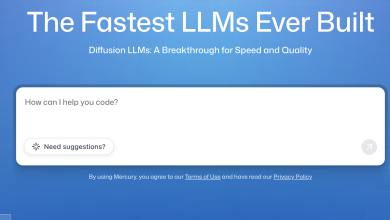
Merger and Acquisition (M&A) deals are complex, resource-heavy transactions that require meticulous planning, detailed evaluation and impeccable execution. And time. But in a highly competitive environment, the window for closing a deal is rapidly shrinking from several months to a few weeks. Precision at speed was unthinkable in the past, when due diligence, contract migration, document creation and review, financial analysis and underwriting were all done manually. Things have changed dramatically thanks to advanced AI technologies, which can execute all these tasks with great accuracy and speed. Deal closure apart, AI also enhances day-to-day investment banking operations: a consulting firm estimates that generative AI could bump up front-office productivity in leading investment banks by as much as one-fourth or even one-third, to increase revenue per front-office employee by US $3.5 million next year.
Here is a closer look at AI’s role across the M&A deal cycle:
Reimagining Deal Origination
AI-powered deal origination platforms ingest, consolidate and analyze massive data – including millions of company profiles, recent activities and financial information – at lightning speed to highlight relevant opportunities, for example, companies that are in need of capital or are open to acquisition. Armed with real-time market intelligence, contracting parties can decide which opportunities to pursue and which to avoid. Analyses of historical data patterns and market trends enable companies to predict integration risks and future performance. Further, AI-powered simulations of various deal scenarios and their potential outcomes allow the teams to make fully informed choices.
For example, Bank of America Merrill Lynch uses analytics to rank deal origination opportunities, understand client behavior patterns and measure risks. Human-AI hybrid teams are leveraging analytics to optimize M&A strategy, especially in industries with complicated valuations, such as technology and healthcare.
Making the perfect match
Another AI use-case in M&A is target identification; intelligent systems continuously monitor the market to identify acquisition targets that are aligned with the buyer’s corporate goals, even prioritizing them based on key requirements, such as size, complementarity of services and organizational culture. Machine learning models evaluate sectoral focus, funding history and other parameters to match the acquiring companies with the most suitable targets. Such automation brings objectivity and rigor to the selection process, and accelerates it by narrowing the pipeline of potential acquisition candidates. The result is better decisions, higher efficiency and stronger alignment with strategic objectives.
Improving due diligence
AI can improve and accelerate due diligence processes by quickly identifying critical documents, such as vendor and customer contracts, intellectual property agreements, financial reports etc., and analyzing them to identify concerns, for example, compliance issues, indemnity and termination clauses, ESG commitments and other risks. Further, algorithms can analyze the extensive data involved in M&A to highlight accounting irregularities, anomalous cash flows, divergence between predicted and actual results and other weaknesses. Predictive AI solutions can anticipate post-merger risks in advance to allow timely intervention. By enhancing the speed and reliability of due diligence, AI mitigates the legal and financial risks of all the parties concerned.
Streamlining M&A contracting
Migrating legacy contracts from the acquired business is among the biggest challenges in M&A. Identifying, reviewing and integrating contracts, which typically exist in multiple systems and formats, can be a nightmare. AI provides huge relief by automating the extraction of important clauses, conditions and obligations from these contracts, regardless of their form or location, to accelerate migration while minimizing errors. What’s more, AI streamlines future access to the contracts by consolidating them within a central repository.
Enabling insights-based decisions for deal closures
M&A transactions require a multitude of strategic decisions that can benefit from AI’s insights. For instance, AI-driven contract analysis clarifies the deal’s revenue and cost implications, and highlights potential risks, such as legal liability, to help the parties take an informed go/no-go decision. Another example is performance monitoring, where AI tracks the performance of a contract to highlight improvement areas.
Helping in speed capital raising decisions
Other investment banking functions, for example, debt issuance, can also leverage AI to great effect. For instance, investment banks can speed up capital raising by automating manual activities – from document review to investor communication – and using AI’s real-time insights to make faster decisions. They can streamline fundraising by employing analytical tools to identify the right investors for different funds, and by using AI to personalize engagement based on investor preferences. AI’s insights into unique investor needs enables investment banks to tailor their propositions to improve fundraising success rates. Generative AI has opened up even more possibilities for underwriting and debt issuance by drafting prospectuses, term-sheets and legal documentation. Earlier this year, the CEO of Goldman Sachs said AI can draft 95 percent of an S1 filing (IPO prospectus) within a few minutes.
AI: Investment banking’s trusted partner
These are challenging times for investment banks, who must manage increasingly complex operations with precision and speed. This is only possible by employing advanced technologies, such as AI and analytics, across functions, from M&A to underwriting to advisory. Currently, the integration of advanced technologies with human expertise is revolutionising the deal life cycle in leading global investment banks, enhancing operational efficiency and strengthening competitive positioning.




